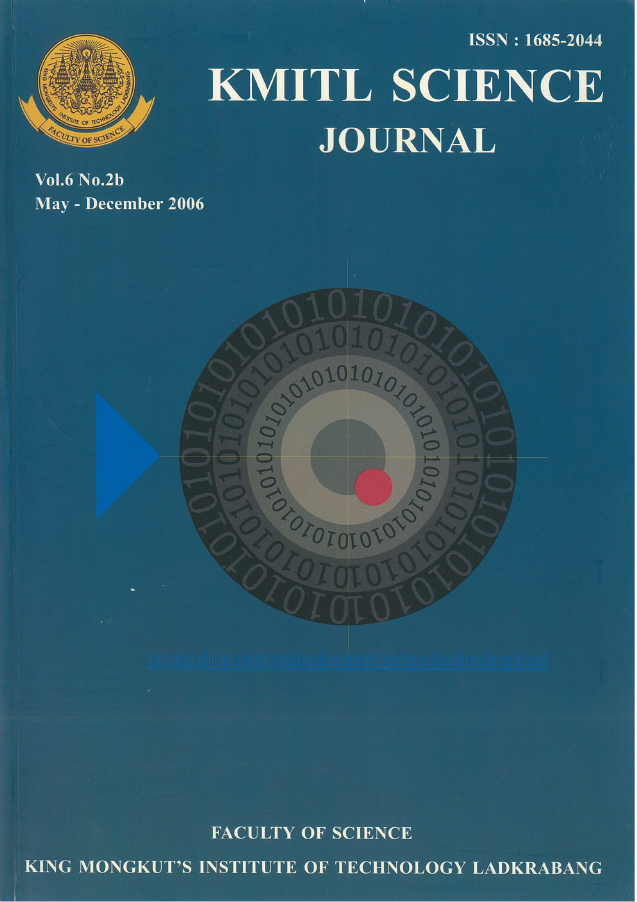The Prevalence of Resistance to Antimicrobial Agents of Staphylococcus Species Isolates from Milk Products in Mashhad, Iran
Main Article Content
Abstract
Staphylococci are widely distributed in the nature. Although most of Staphylococcus spp. are saprophytes, but some are pathogenic to both human and animal species. Staphylococcus, especially S. aureus are the leading cause of nosocomial infections. These organisms frequently reveal a high natural, intrinsic resistance to antimicrobials. In this study, the prevalence of coagulase positive and coagulase negative staphylococcal contamination of milk products and antibiotic resistance patterns of isolated Staphylococcus spp. in Mashhad-Iran were investigated. For this purpose, 300 samples from different dairy products were purchased directly from the market. A total of 54 Staphylococcus spp. were isolated of which 18 strains (33.3%) were coagulase positive, and 36 strains (66.7%) were coagulase negative. The antimicrobial susceptibilities of these isolates were determined against 10 antibacterial agents using the disk diffusion method. Thirteen different antibiotic resistance patterns were observed. The highest level of antibiotic resistance was observed against penicillin (92.6%) and cephalexin, (66.6%). None of the isolates was resistant to norfloxacin and gentamycin. In conclusion, regarding high levels of staphylococcal contamination in different dairy products and remarkable levels of resistance against some antibacterial agents, these products may play a substantial role in prevalence of antibacterial resistance and related hygienic problems.
Keywords: Coagulase-positive; Coagulase-negative Staphylococci; antibiotic susceptibility; milk
Corresponding author: E-mail: mohsenzadeh@yahoo.com
Article Details
Copyright Transfer Statement
The copyright of this article is transferred to Current Applied Science and Technology journal with effect if and when the article is accepted for publication. The copyright transfer covers the exclusive right to reproduce and distribute the article, including reprints, translations, photographic reproductions, electronic form (offline, online) or any other reproductions of similar nature.
The author warrants that this contribution is original and that he/she has full power to make this grant. The author signs for and accepts responsibility for releasing this material on behalf of any and all co-authors.
Here is the link for download: Copyright transfer form.pdf
References
[2] Jablonsky, L.M., and Bohach, G.A., 1997 Staphylococcus aureus. In: Doyle, M.P., Beuchat, L.R., Montville, T.J., Eds. Washington, ASM Press, pp. 353-376.
[3] Bennel, R.W., 1986 Staphylococcus aureus Identification Characteristics and Entrotoxigenicity, Journal of Food Science, 51, 1337-39.
[4] Genigeorgis, C.A., 1989 Present State of Knowledge on Staphylococcal Intoxication, International Journal of Food Microbiology, 9, 327-360.
[5] Jeljaszewicz J., Mlynarczyk G., and Mlynarczyk A. 2000 Antibiotic Resistance in Gram-Positive Cocci, International Journal of Antimicrobial Agents, 16, 473-478.
[6] ISO 707, 1997 Milk and Milk Products – Guidance on Sampling, International Organization of Standardization, Geneva, Switzerland.
[7] Lancette, G.A., and Tatini, S.F., 1992 Staphylococcus aureus. In: Vanderzant, C., Splittstoesser, D.F. Eds. Compendium of Methods for the Microbiological Examination of foods. 3rd edition, Washington, American Public Health Association, pp. 533-550.
[8] Woods, G.L, and Washington, J.A., 1995 Antibacterial Susceptibility Tests: Dilution and Disk Diffusion Method. In: Murray Baron P.R., Pfaller E.J., Tenover M.A., Yolken F.C., Eds., Manual of clinical microbiology, Am. Soc. Microbiol. Washington DC, pp. 1327-1341.
[9] Ikram, M., 1977 Growth and Enterotoxin A Production by S.aureus in Fluid Dairy Products, Journal of Food Protection, 40, 769-771.
[10] Aarestrup, F.M. 1999 Association Between the Consumption of Antimicrobial Agents in Animal Husbandary and the Occurrence of Resistant Bacteria Among Food Animals, International Journal of Antimicrobial Agents, 12, 279-285.
[11] Boynukara, B., Timurkan, H., and Kuyucuoglu, Y., 1991 Antibiotic susceptibity of Staphylococcus aureus Strains Isolated from Cow’s Milk, Veterinarium. 2, 13-16.
[12] Vieira-da-Motta, O., Donatele, D., Oliveira, P.R., and Folly, M.M., 2000 Methicillin Susceptible Staphylococcus aureus from Mastitic Milk in Rio de Janeiro State, Brazil, Revista Brasileira de Ciencia Veterinaria 7(2), 123-126.
[13] Simko, S., and Bartko, P., 1996 Antibiotic Resistance in Staphylococcus aureus Mastitis in Sheep, Sheep Milk and Its Products, Veterinary Medicine, 41, 241-244.
[14] Bakken, G., and Gudding, R., 1978 In Vitro Antibiotic Sensitivity Test of Staphylococcus aureus from MastiticMilk, Nord. Vet. Med., 30, 15-17.
[15] Guta, C., Sebunya, T.K., and Gashe, B.A., 2002 Antimicrobial Susceptibility of Staphylococci Species from Cow Foremilk Originating from Dairy Farms Around Gaborone, Botwana, East African Medicine Journal, 79, 45-48.
[16] Costa, E.O., Benites, N.R., Guerra, J.L., and Mecville, P.A., 2000 Antimicrobial Susceptibility of Staphylococcus spp. Isolated from Mammary Parenchymas of Slaughtered Dairy Cows, Journal of Veterinary Medicine, 47(2), 99-103.
[17] Kaya, O., Kirkan, S., Gulal, M., and Unal, B., 1998 Identification and Antibiotic Susceptibility Microorganisms Causing Clinical Mastitis in Dairy Cows in Aydin Region, Turkey, Pendik Veterinary Microbiology Dergisi 30(1), 25-29.


